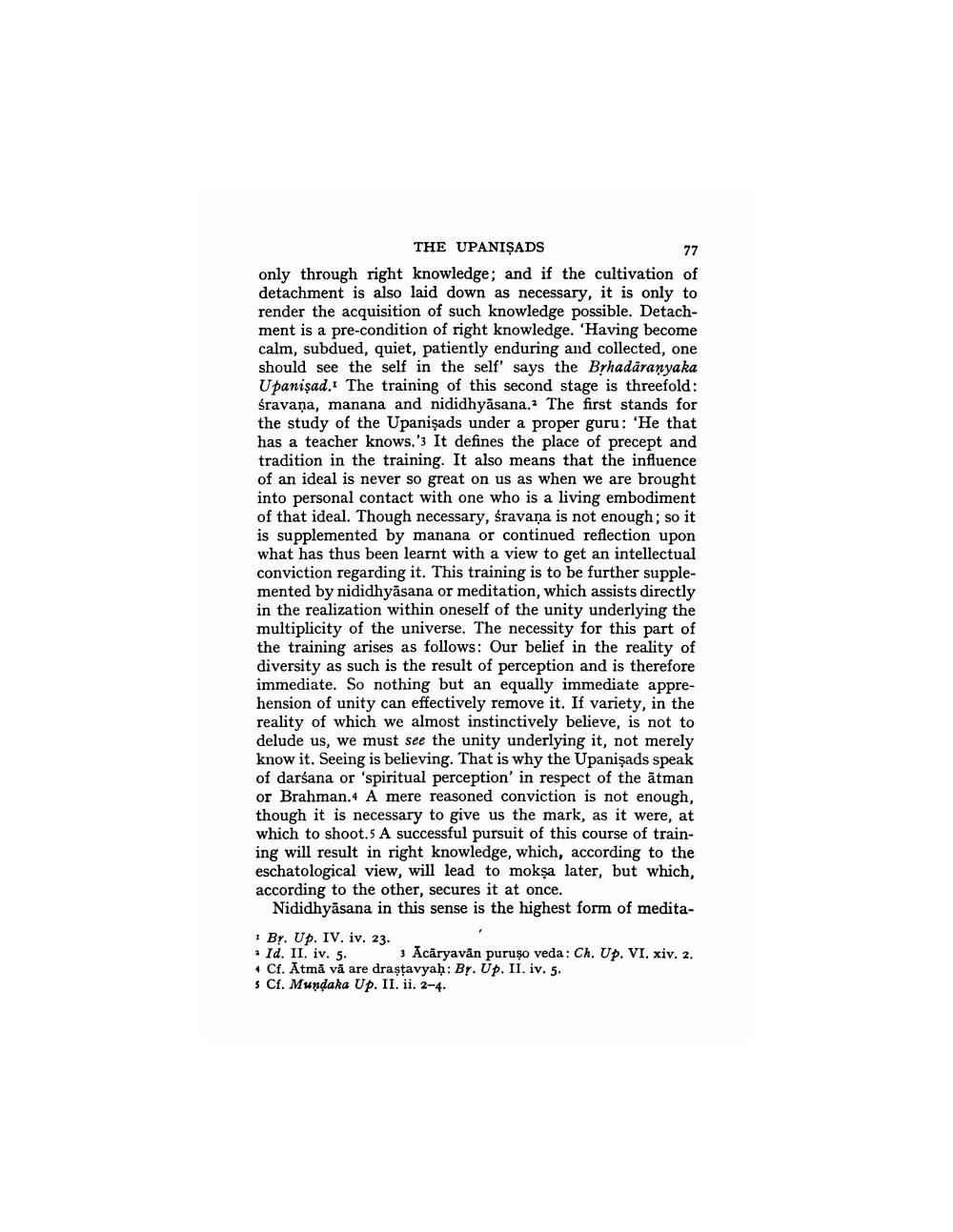________________
THE UPANISADS
77
only through right knowledge; and if the cultivation of detachment is also laid down as necessary, it is only to render the acquisition of such knowledge possible. Detachment is a pre-condition of right knowledge. 'Having become calm, subdued, quiet, patiently enduring and collected, one should see the self in the self' says the Bṛhadaranyaka Upanisad. The training of this second stage is threefold: śravana, manana and nididhyāsana. The first stands for the study of the Upanisads under a proper guru: 'He that has a teacher knows.'3 It defines the place of precept and tradition in the training. It also means that the influence of an ideal is never so great on us as when we are brought into personal contact with one who is a living embodiment of that ideal. Though necessary, śravana is not enough; so it is supplemented by manana or continued reflection upon what has thus been learnt with a view to get an intellectual conviction regarding it. This training is to be further supplemented by nididhyasana or meditation, which assists directly in the realization within oneself of the unity underlying the multiplicity of the universe. The necessity for this part of the training arises as follows: Our belief in the reality of diversity as such is the result of perception and is therefore immediate. So nothing but an equally immediate apprehension of unity can effectively remove it. If variety, in the reality of which we almost instinctively believe, is not to delude us, we must see the unity underlying it, not merely know it. Seeing is believing. That is why the Upanisads speak of darśana or 'spiritual perception' in respect of the atman or Brahman.4 A mere reasoned conviction is not enough, though it is necessary to give us the mark, as it were, at which to shoot.5 A successful pursuit of this course of training will result in right knowledge, which, according to the eschatological view, will lead to mokṣa later, but which, according to the other, secures it at once.
Nididhyasana in this sense is the highest form of medita
1 Br. Up. IV. iv. 23.
a Id. II. iv. 5.
3 Acāryavan puruso veda: Ch. Up. VI. xiv. 2.
4 Cf. Atmă vă are draṣṭavyah: Br. Up. II. iv. 5. s Cf. Mundaka Up. II. ii. 2-4.




